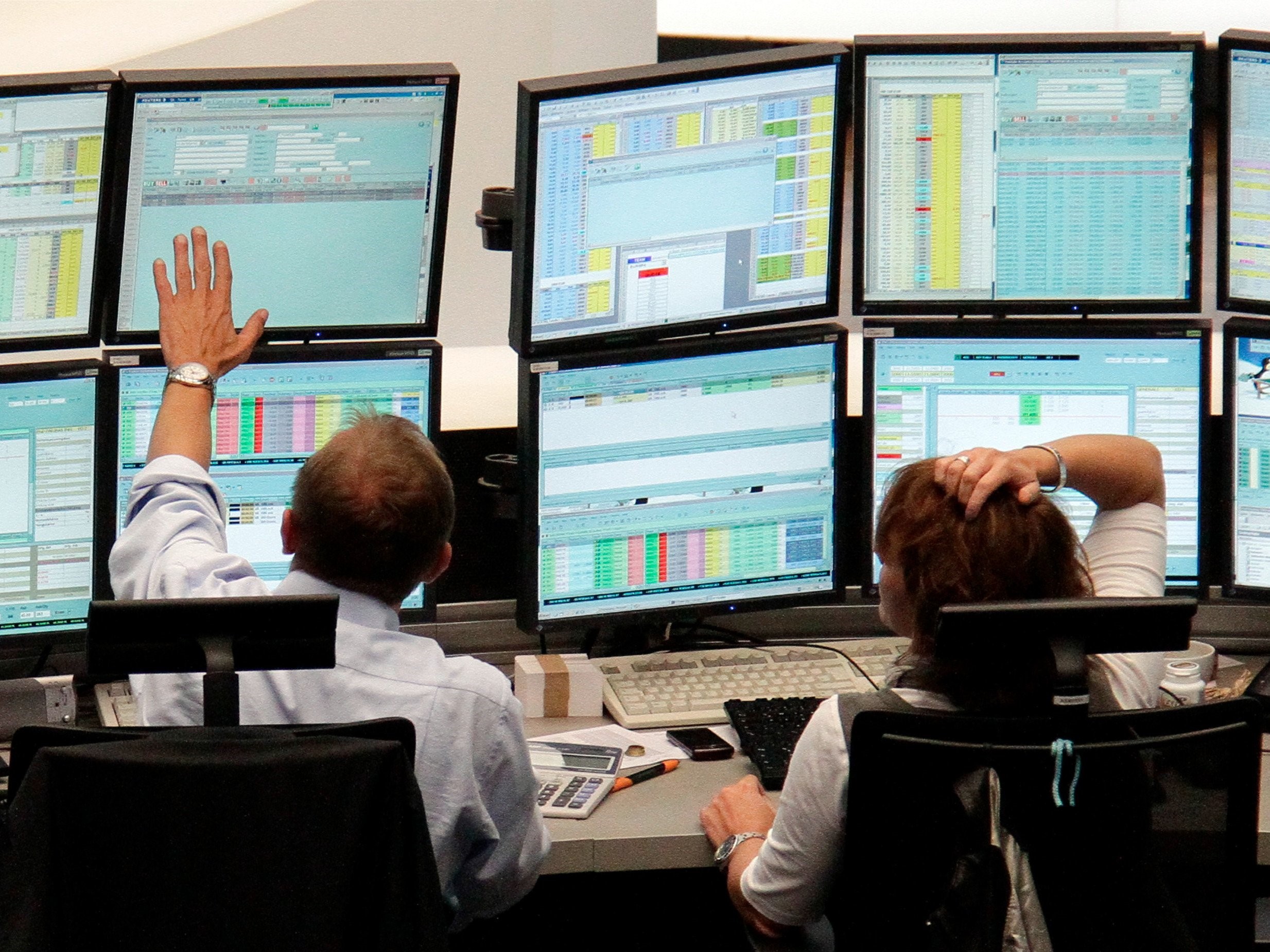
- Trading basics
Market makers and their role in the market
Do you want to know how to make money from this?
Register for free and get expert advice, access to a training course and webinars.
Many traders admire the ability of market makers to consistently earn profits in financial markets. Their strategies often seem complex and inaccessible to ordinary investors. However, behind this apparent complexity lie quite understandable principles.
In this article, we will attempt to demystify market makers’ trading strategies and present them as practical recommendations that may be useful for both experienced traders and beginners
Who is a market maker?
A market maker is a specialized participant in the financial market who commits to maintaining continuous trading in certain securities.
They act as a seller to buyers and a buyer to sellers, ensuring the two-way nature of trading. The market maker profits from the difference between the buy and sell prices, and their activities contribute to increasing the liquidity of the financial market.
Who acts as market makers?
Market makers can be either institutional participants in exchange trading or individual traders. In their role, they may perform a dual function: executing trades on behalf of other investors (agency operations) and making trades for their own account (principal operations).
Market makers’ principal trades are conducted at prices published in the exchange’s trading system. Their profits are formed from the spread — the difference between the buying and selling prices of an asset.
Often, market makers encounter situations where the price of an asset they purchased declines before they can sell it, but it still exceeds the price they bought it from the seller. Thus, they offset the risks associated with price fluctuations through the spread.
Example of market maker operations
Let’s consider a specific example of a market maker operating in the stock market of company ABC. Suppose the market maker offers the following quote: buying 100 shares at $5 and selling 200 shares at $5.5. In other words, the market maker is ready to buy a certain number of shares at the given price (Bid) while offering to sell more shares at a slightly higher price (Ask).
This two-way quote creates an opportunity for other market participants to trade with the market maker. They can either accept the buying offer and sell shares to the market maker at $5 or accept the selling offer and buy shares from the market maker at $5.5.
The difference between the buy and sell price, in this case, $0.5, may seem insignificant. However, even a small price difference with large trading volumes can lead to substantial profits for the market maker throughout the trading day.
The role of market makers in financial markets
The continuous movement of financial markets requires an effective mechanism to ensure liquidity, which is the role market makers fulfill. Their activities aim to maintain the smooth trading process and create conditions for the quick buying and selling of assets.
Traditionally, market makers relied on their experience and intuition when making decisions. However, modern technology has enabled the development of automated systems capable of independently analyzing the market situation and making trading decisions. The combination of human expertise and algorithmic automation allows market makers to adapt more efficiently to changing market conditions and optimize their trading operations.
In addition, market makers facilitate trade execution. They act as intermediaries between buyers and sellers, enabling almost instant trades. This significantly simplifies the trading process and reduces transaction costs.
How do market makers earn profits?
The main motivation of market makers is profit. To achieve this, they apply a variety of strategies that allow them to benefit from the liquidity they provide. By buying securities at a lower price and selling them at a higher price, market makers earn a profit from the difference. Even a small spread can generate significant income with large trading volumes.
An important aspect of market makers’ operations is managing their securities portfolio. By holding a certain amount of assets, market makers ensure the quick buying or selling for other market participants. However, this strategy is associated with certain risks related to price fluctuations. Successful market makers can predict market movements and profit from favorable price changes.
Analyzing market order flow is also a priority for market makers. By tracking supply and demand for various assets, market makers can anticipate future price changes and adjust their quotes to maximize profits.
Active market makers
Active market makers represent a category of financial market participants with a more proactive and aggressive approach to trading. Seeking to maximize profits, they actively analyze a wide range of data, including market statistics, economic indicators, and order flow dynamics. Based on this information, active market makers take a series of strategic actions:
- Forming positions based on predictions of their future value. Accumulating large amounts of securities, active market makers aim to profit from expected demand growth.
- Managing the spread depending on current market conditions. During periods of high volatility, they may widen the spread to reduce risks, while in a stable market, the spread may narrow to attract more market participants.
- Initiating market movements (large trades), significantly influencing market dynamics. These actions may be aimed at creating certain price trends that benefit their positions.
However, the aggressive trading style of active market makers carries its own risks. Incorrect market forecasts can lead to significant financial losses, especially with large open positions. Moreover, the active trading activity of market makers may raise suspicions of market manipulation, drawing increased attention from regulators.
Passive market makers
In contrast to their more aggressive counterparts, passive market makers follow a strategy aimed at maintaining market stability and liquidity. Their primary goals are to ensure the smooth trading process and create conditions for efficient deal execution.
The key characteristics of passive market makers include:
- Narrow spreads. This means the difference between the price they are willing to buy at and the price they are willing to sell at is minimal. Such an approach enhances market attractiveness for investors.
- Passive order matching. These market makers don’t actively influence price formation but only ensure efficient deal execution.
Compared to active market makers, passive players are subject to fewer risks related to price fluctuations. However, their profitability is typically lower due to narrower spreads and a less aggressive trading strategy.
Market makers on stock exchanges
Let’s look at examples of market makers on some of the world’s largest exchanges:
- NYSE and Nasdaq (USA): These exchanges set the standard for stock trading. Market makers here play a crucial role in maintaining continuous trading and market depth. Major market makers on these platforms include Citadel Securities LLC, GTS Securities LLC, and Virtu Americas LLC.
- Frankfurt Stock Exchange (Germany): On this exchange, market makers are known as designated sponsors. Leading financial giants like Berenberg, JPMorgan, Morgan Stanley, Optiver, and UBS Europe are among them.
- London Stock Exchange Group (UK): One of the largest exchange groups in Europe. Market makers here include well-known banks and financial institutions such as BNP Paribas, GMP Securities Europe, Liberium Capital, Mediobanca, and Standard Chartered.
- Tokyo Exchange Group (Japan): It unites the Tokyo and Osaka stock exchanges. Key market makers on this platform include ABN AMRO Clearing, Nissan Securities, Nomura Securities, Phillip Securities, and Societe Generale.
Regulatory requirements for market makers
The activities of market makers, who directly influence liquidity and pricing in financial markets, require thorough regulation. Their significant impact on market dynamics explains the need for oversight of their actions. Market maker regulation aims to prevent manipulation, unfair practices, and protect investors’ interests. It promotes a fair, transparent, and stable market environment.
Regulatory requirements for market makers usually include strict trading rules, stringent risk management, and transparency reporting standards. This increases market trust and reduces volatility. Therefore, market maker regulation not only serves the interests of investors but also contributes to the overall development and stability of financial markets.
In the USA, market maker activities are highly regulated. Firms providing market-making services must strictly comply with the requirements of regulators such as the Securities and Exchange Commission (SEC) and the Financial Industry Regulatory Authority (FINRA). They face heightened requirements in areas such as legal compliance, anti-money laundering measures, and cybersecurity. Regulators closely monitor market makers’ trading operations, systems, and algorithms, as well as their internal control rules.
Strict regulation in the USA creates a reliable foundation for the functioning of the securities market and minimizes risks for investors. U.S. market makers must prioritize compliance with all regulatory requirements to avoid severe financial penalties.
Market making in cryptocurrency markets
Market makers, who play a key role in ensuring liquidity in traditional financial markets, are also actively involved in shaping the cryptocurrency market. However, the specifics of the cryptocurrency market require market makers to adapt their strategies to the unique conditions of this segment.
One of the most significant challenges in the cryptocurrency market is the lack of liquidity. Unlike traditional financial instruments, many cryptocurrencies are characterized by relatively low trading volumes, which can lead to significant price fluctuations. By constantly providing buy and sell quotes for cryptocurrencies, market makers contribute to increasing market liquidity and stabilizing prices.
Although the fundamental principles of market making remain unchanged, market makers’ activities in the cryptocurrency market have several features:
- High volatility: significant cryptocurrency price swings require market makers to be flexible and capable of quickly adapting to changing market conditions. To manage risks associated with high volatility, market makers may adjust the spread between buy and sell prices or reduce the size of their positions.
- Underdeveloped regulation: the regulatory framework governing activities in the cryptocurrency market is still evolving. Market makers must constantly monitor legislative changes and adjust their strategies to meet new requirements.
- Continuous innovation: the cryptocurrency market is highly innovative. The emergence of new cryptocurrencies, decentralized exchanges, and other financial instruments requires market makers to continuously learn and refine their skills.
As the cryptocurrency market continues to evolve, market-making strategies will undoubtedly adapt. The growing adoption of algorithmic trading and the rise of decentralized finance (DeFi) will likely shape the future of market making in this dynamic space.
Do you want to know
How to make money from the news
Register for free and get:
- Expert consultation;
- Access to the training course;
- Opportunity to participate in webinars


